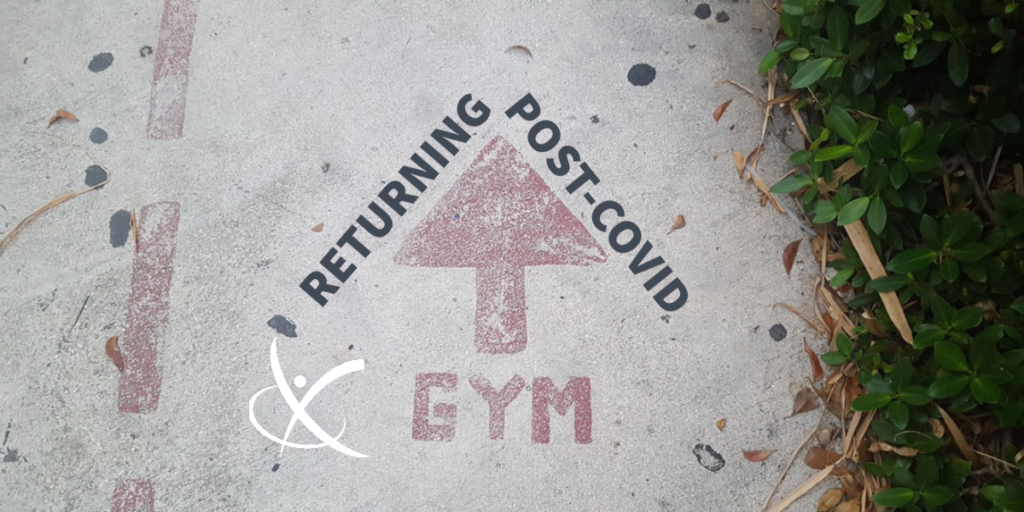A 4-Week Plan to Re-Start Your Workouts
Avoiding Injuries When Resuming Activity
The more I talk to people, and the more time gyms spend closed, the more people are either panicking or taking matters into their own hands. I mean, that’s a good thing, because they are primed and ready to go, making health and fitness a priority. Sweet! I’m all for that. But we need to make sure we don’t make New Years come in July. Yes, we have been stonewalled by this virus, the weather is getting nicer, and gyms are waiting for us to get back to visit them, but we can’t treat this like another resolution where we try and make up for lost time. As much as I like to see my schedule fill up, I’d much rather help people get more fit and improve wellness rather than see them injured. So we have to be smart about this and have some reserve when it comes to getting back to the gym after a while.
I’m not saying you can’t go as often, or workout as much. In fact, when it comes to training variables, frequency is the first thing we WANT you to increase. We want to introduce a new activity often, but in lower doses. So that means the intensity and volume needs to be scaled back so that you can get your body used to it. The National Strength and Conditioning Association (NSCA) has specific guidelines for reintroducing athletes to activity after prolonged periods of inactivity. These protocols are in place in order to safety reintroduce the body to high levels of stress. I’ve done a number of Facebook live posts on this topic, but I want to break it down again with respect to strength-training in the gym.
The first thing you need to know is what your ideal “long workout” would be. Is it 30 minutes? 60 minutes? 2 hours? Then you need to find your ideal frequency, or how many days per week you want to workout. Once you do this, you multiple the time (in hours) by the days per week. So if your goal routine is working out 1.5 hours (per workout) 4 days a week, that ends up being 6 hours a week. This number is important because we work backward from that.
We need to implement a 4-week “ramp-up” period in which we gradually expose your body to the workouts you want to do. Since we already know your ideal week calls for 6 hours of activity, then we do some basic math to decide how much each week in the “ramp up” month will get.
Week 1 = 50% of the 6 hours (3.0 hours)
Week 2 = 70% of the 6 hours (4.2 hours)
Week 3 = 80% of the 6 hours (4.8 hours)
Week 4 = 90% of the 6 hours (5.4 hours)
So that means in week one, you should split 180 minutes of total exercise over 4 different days. This is because your ideal week has you working out 4 days/week. If it’s 5 days then you would split the time over 5 days etc. It doesn’t really matter how you break that time up, some days can be longer, and some shorter, or you can split it up evenly into four separate 45-minute workouts. What is more important, is that the intensity alternates between workouts. Keep some days high intensity, and some days low. Think of this as the overall effort of the workout. High intensity would be anything above a 5/10 effort whereas low intensity would be less than 5/10 effort.
Week two in this program will call for 252 minutes over 4 days, week three has 288 minutes and week four gets close to 6 hours with 324 minutes over four days. This entire ramp-up is to gradually expose your body to working out and is the ideal scenario for reintroducing stress on your body after prolonged periods of inactivity.
It’s also a good idea to alternate body parts. Try to avoid a lot of back to back training days for upper or lower body. This is just to save your tendons during this initial 4 week period. We love super setting upper/lower body exercises in general, so it might help to split up your workouts as well. Make a list of all the movements you want to do for each body part, and your ideal sets and reps. This is also a great starting point to work backward. Take those sets/reps and split it up over all of the days you plan to workout. For instance, if I’m going to target shoulders, I’ll do half on one day, and half another, on non-consecutive workout days. For instance, if I plan to workout 4 days, then I’ll do half on Day 1 and the other half on day 3. Those would be non-consecutive days. This will easily help your body make the adjustment, otherwise, it is very possible you may get some pushback from your body. The same rules apply to other body parts.
Now we know many of you have equipment at home, which is excellent. But be honest with yourself and be careful when you do get back in the gym, or when you do start new exercises that you haven’t programmed in for a while. In February and March, I’m treating a lot of shoulders, backs, and knees, because those are the major joints used in many movements. Don’t overload your tendons with volume if you can avoid it. Limiting overall stress will definitely help.
Hope this helps! Fire over any questions, and stay tuned for our follow up regarding proper heart rate zones for cardio, and how that will also help us fight these pandemics in the future.
Happy Training!
